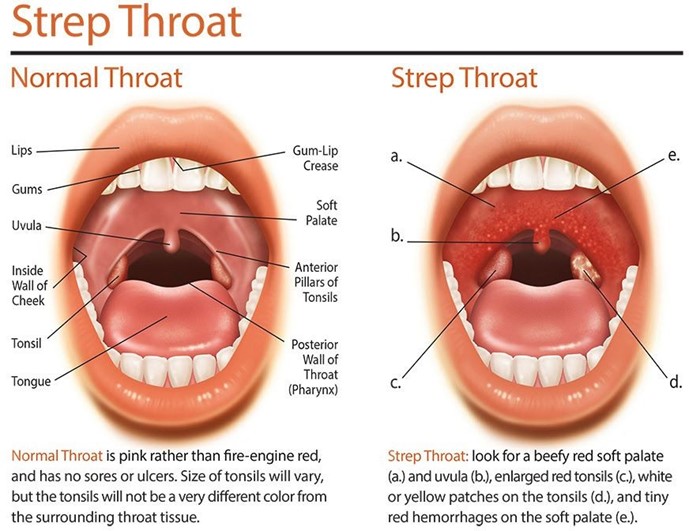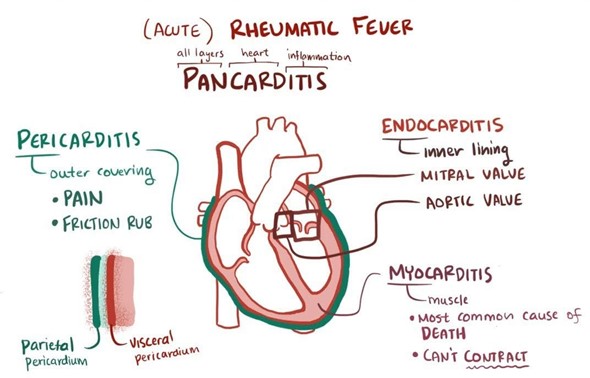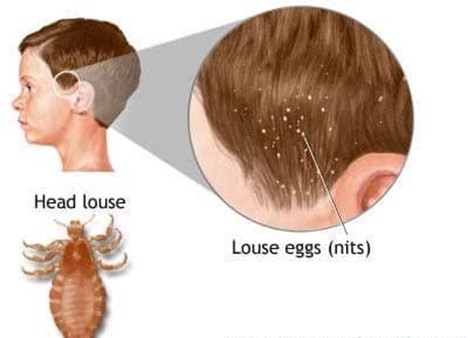A nurse is caring for a child who was admitted with suspected rheumatic fever. The provider prescribes an antistreptolysin O (ASO) titer. The parent asks the nurse about the purpose of the test. Which of the following responses should the nurse make?
"This test will indicate if your child has rheumatic fever."
"This test will confirm if your child had a recent streptococcal infection."
"This test will indicate if your child has a therapeutic blood level of an aminoglycoside."
"This test will confirm if your child has immunity to streptococcal bacteria."
The Correct Answer is B
Choice A: This test will not indicate if the child has rheumatic fever, as rheumatic fever is a complication of an untreated or inadequately treated streptococcal infection that affects the heart, joints, skin, and brain. Rheumatic fever is diagnosed based on clinical criteria, such as carditis, polyarthritis, chorea, erythema marginatum, and subcutaneous nodules.
Choice B: This test will confirm if the child had a recent streptococcal infection, as antistreptolysin O (ASO) is an antibody that the body produces in response to streptococcal bacteria. A high ASO titer indicates that the child was exposed to streptococcal bacteria within the past few weeks. A streptococcal infection can cause pharyngitis, tonsillitis, scarlet fever, or impetigo.
Choice C: This test will not indicate if the child has a therapeutic blood level of an aminoglycoside, as an aminoglycoside is a type of antibiotic that is used to treat serious bacterial infections. A therapeutic blood level of an aminoglycoside means that the drug is effective and safe in the body. A therapeutic blood level of an aminoglycoside is measured by a peak and trough level.
Choice D: This test will not confirm if the child has immunity to streptococcal bacteria, as immunity to streptococcal bacteria means that the body can resist or fight the infection. Immunity to streptococcal bacteria can be acquired by natural exposure or vaccination. Immunity to streptococcal bacteria is measured by an antibody titer or a skin test.

Nursing Test Bank
Naxlex Comprehensive Predictor Exams
Related Questions
Correct Answer is D
Explanation
Choice A: Using a pain-rating tool to determine the severity of the joint pain is not the priority assessment for an 8-year-old child who has acute rheumatic fever, which is an inflammatory condition that can affect various organs, especially the heart, joints, skin, and brain. Joint pain is one of the major criteria for diagnosing acute rheumatic fever and can affect one or more large joints, such as knees, ankles, elbows, or wrists. Joint pain can be managed with analgesics or anti-inflammatory drugs.
Choice B: Assessing the client's erythematous rash is not the priority assessment for an 8-year-old child who has acute rheumatic fever, which is an inflammatory condition that can affect various organs, especially the heart, joints, skin, and brain. The erythematous rash is one of the minor criteria for diagnosing acute rheumatic fever and can appear as pink or red patches on the trunk or limbs. The erythematous rash can fade or change location over time and does not require any specific treatment.
Choice C: Identifying the degree of parental anxiety related to the diagnosis is not the priority assessment for an 8-year-old child who has acute rheumatic fever, which is an inflammatory condition that can affect various organs, especially the heart, joints, skin, and brain. Parental anxiety related to the diagnosis can affect their coping skills and ability to care for their child. Parental anxiety can be addressed by providing education, support, and referral to appropriate resources.
Choice D: Auscultating the rate and regularity of the child's heart sounds and notifying the provider immediately of abnormalities is the priority assessment for an 8-year-old child who has acute rheumatic fever, as it can indicate cardiac involvement, which is the most serious complication of acute rheumatic fever. Cardiac involvement can cause damage to the heart valves, myocardium, or pericardium and lead to heart failure or death. Abnormalities in heart sounds may include murmurs, rubs, gallops, or arrhythmias.

Correct Answer is C
Explanation
Choice A: Toys that can't be dry cleaned or washed do not need to be thrown out, as they can be treated by sealing them in plastic bags for two weeks or placing them in a freezer for two days. This will kill any lice or nits that may have been transferred from the child's head.
Choice B: Nits will not always be present, as they can be removed by using a fine-toothed comb or applying products that loosen their attachment to the hair shafts. Nits are the eggs of lice that are glued to the hair near the scalp. Nits can hatch into nymphs within seven to ten days and mature into adult lice within another seven to ten days.
Choice C: All recently used clothing, bedding, and towels must be washed in hot water, as this will kill any lice or nits that may have been transferred from the child's head. Hot water means at least 54°C/130°F for at least ten minutes. The items should also be dried in high heat for at least twenty minutes.
Choice D: Treating all the family members is not necessary, as only those who have evidence of lice or nits should be treated with medicated shampoos or lotions that kill lice and prevent re-infestation. Treating all the family members may cause unnecessary exposure to chemicals or resistance to treatment.

Whether you are a student looking to ace your exams or a practicing nurse seeking to enhance your expertise , our nursing education contents will empower you with the confidence and competence to make a difference in the lives of patients and become a respected leader in the healthcare field.
Visit Naxlex, invest in your future and unlock endless possibilities with our unparalleled nursing education contents today
Report Wrong Answer on the Current Question
Do you disagree with the answer? If yes, what is your expected answer? Explain.
Kindly be descriptive with the issue you are facing.
